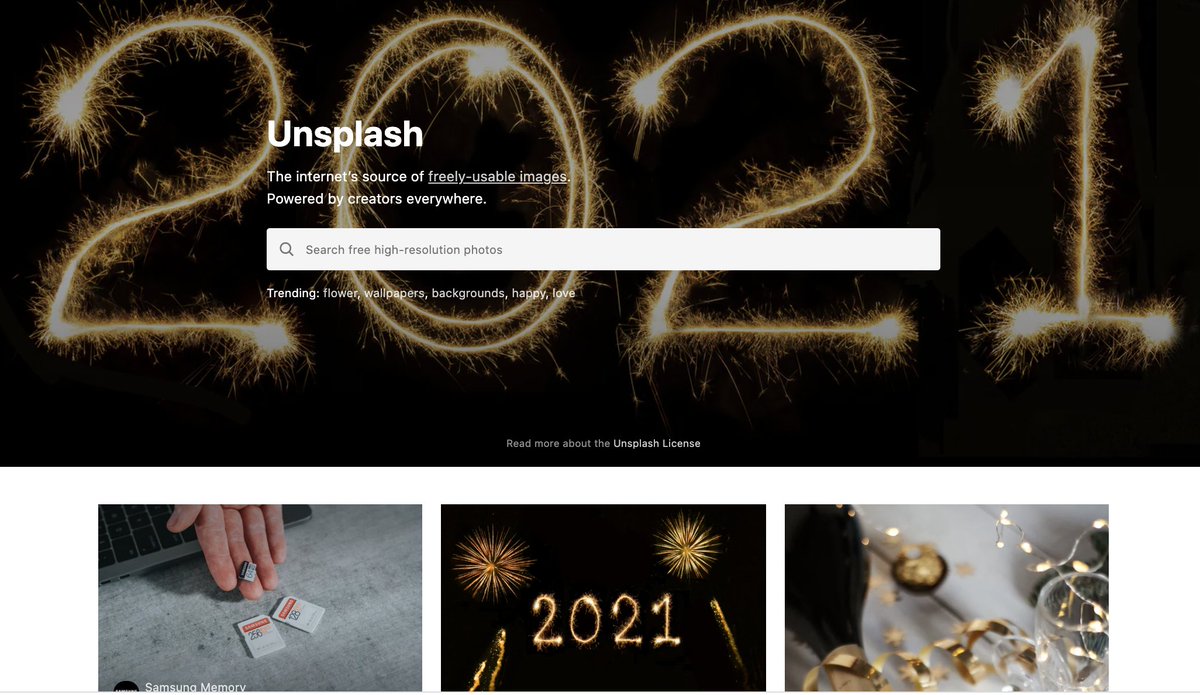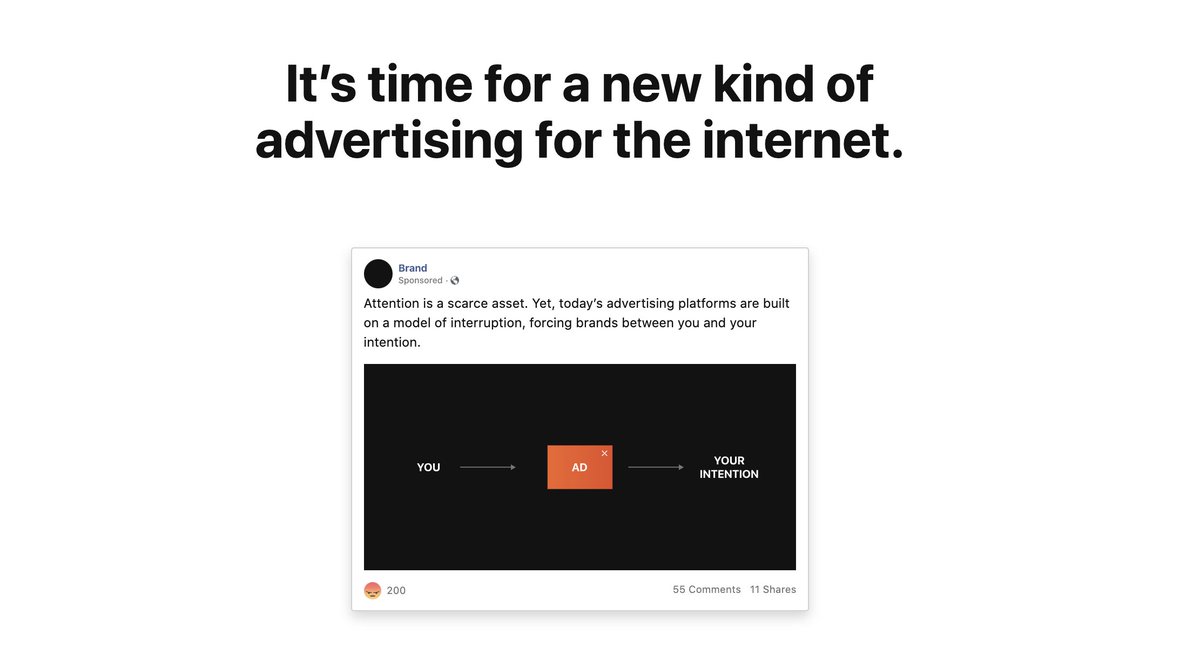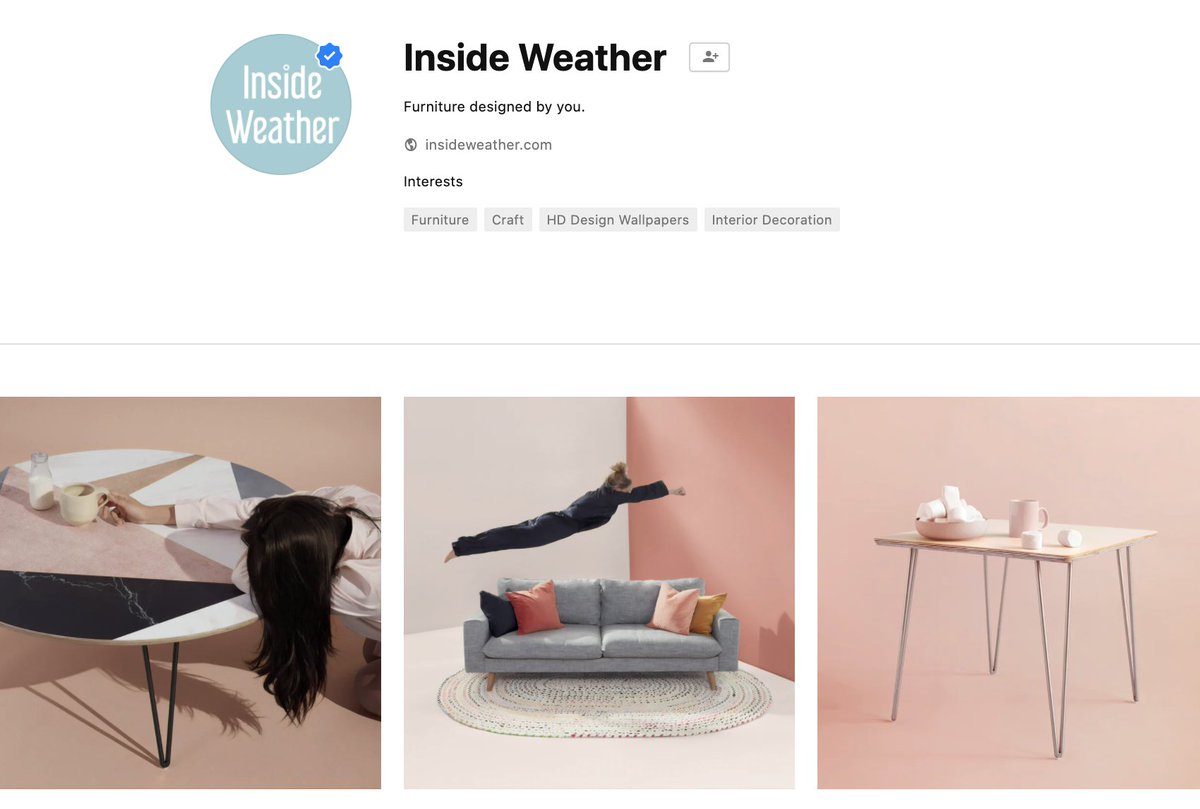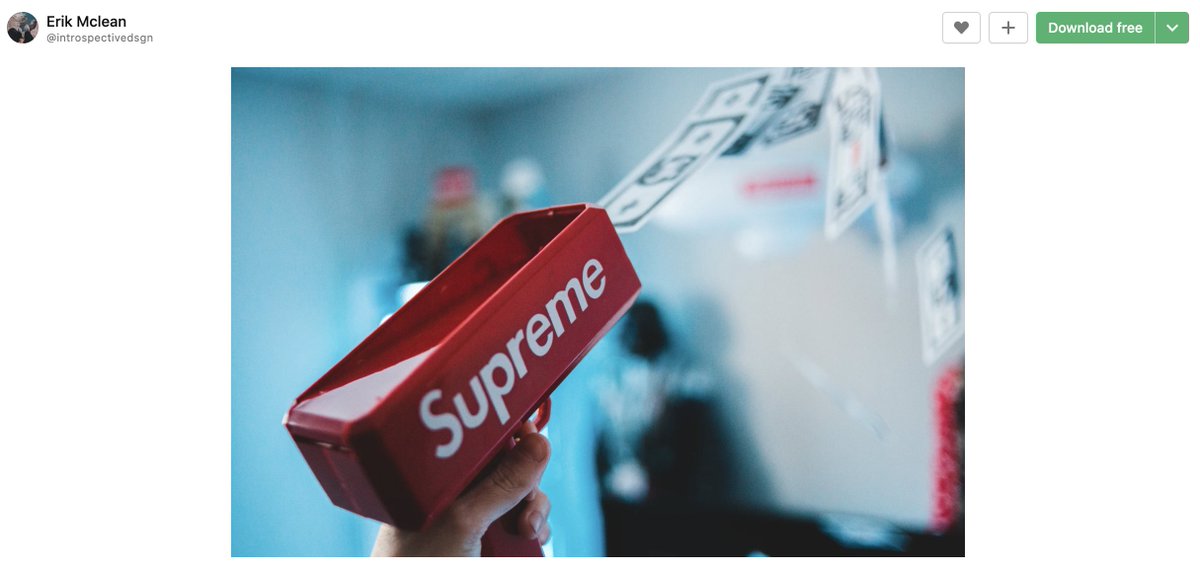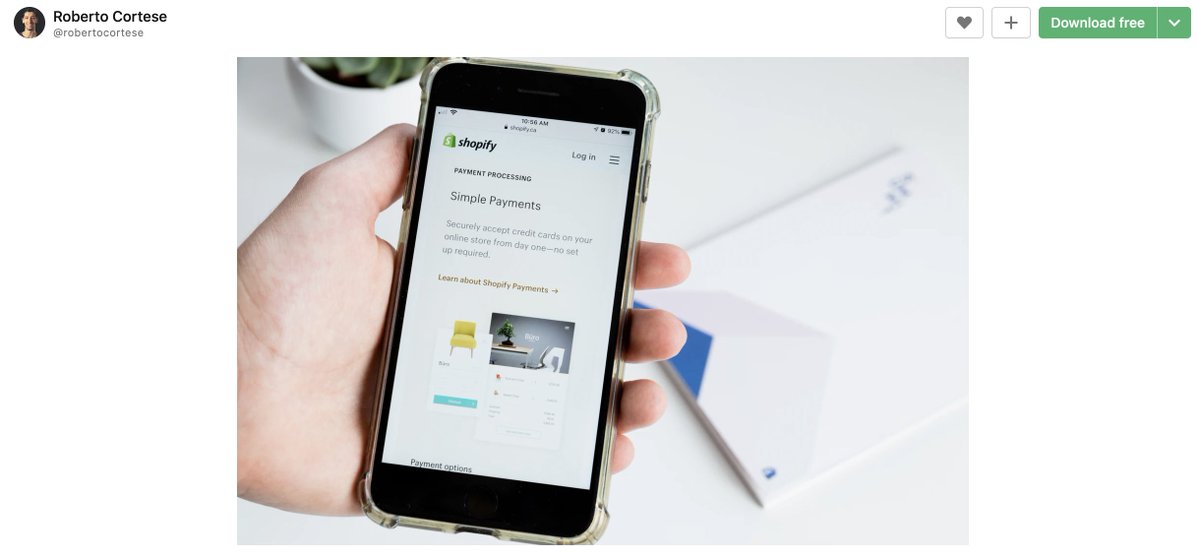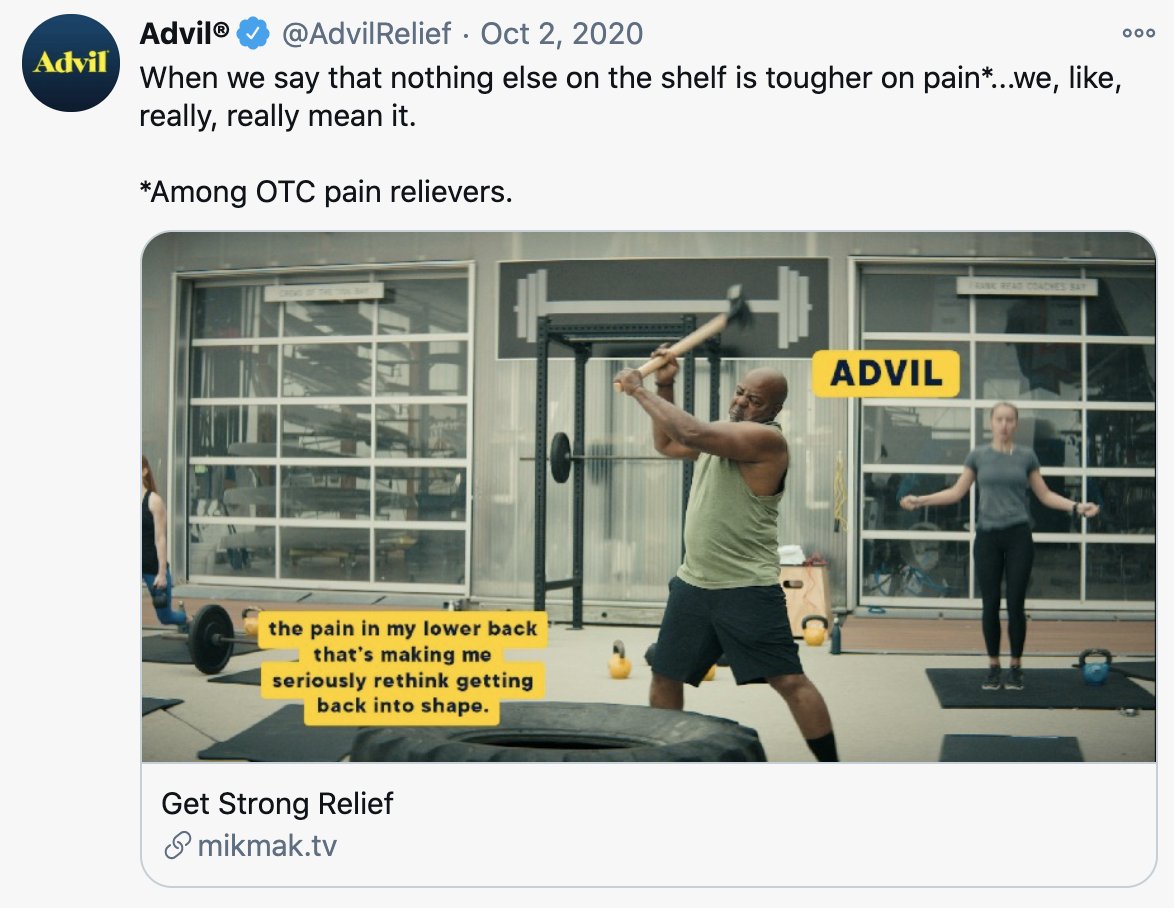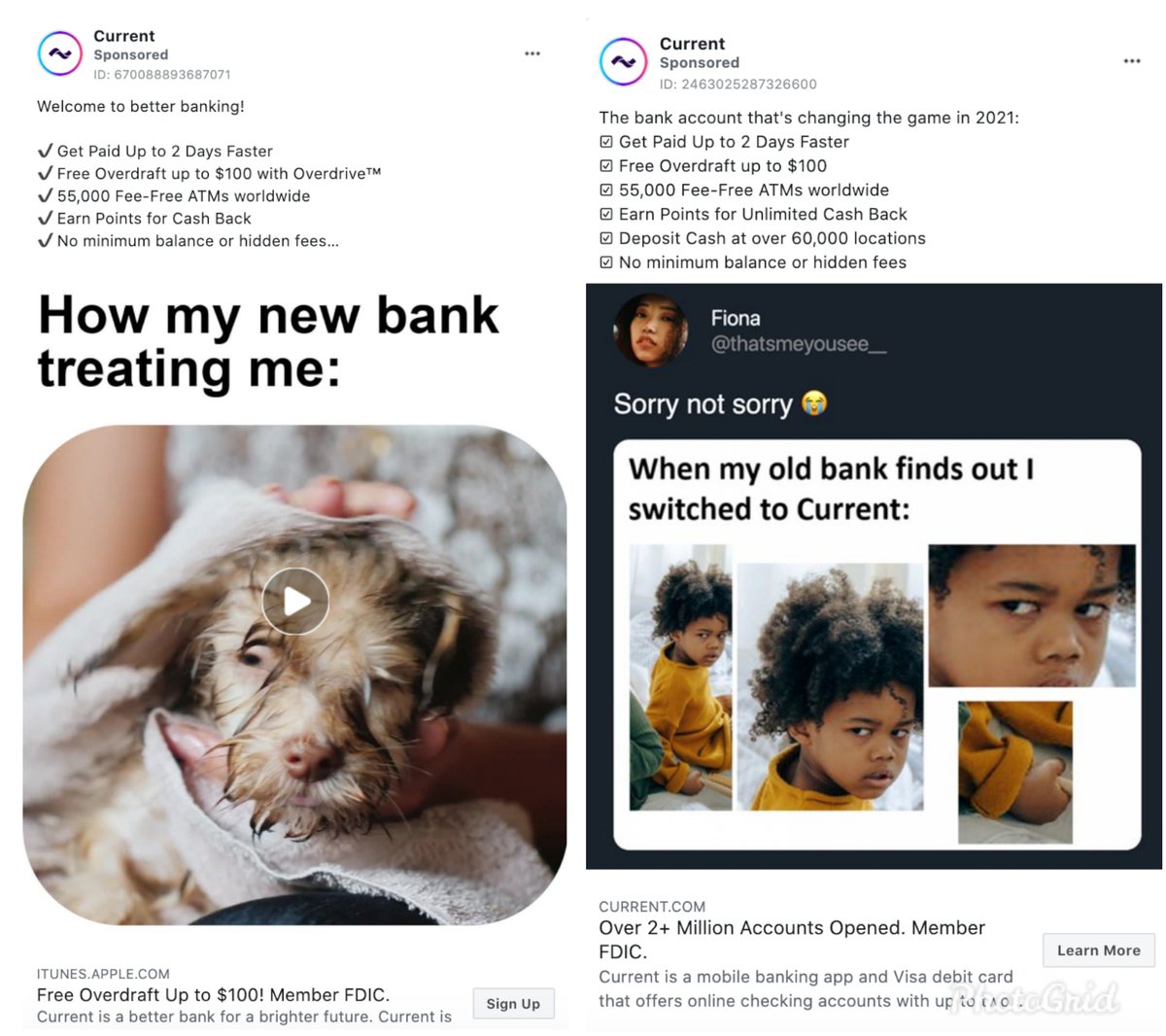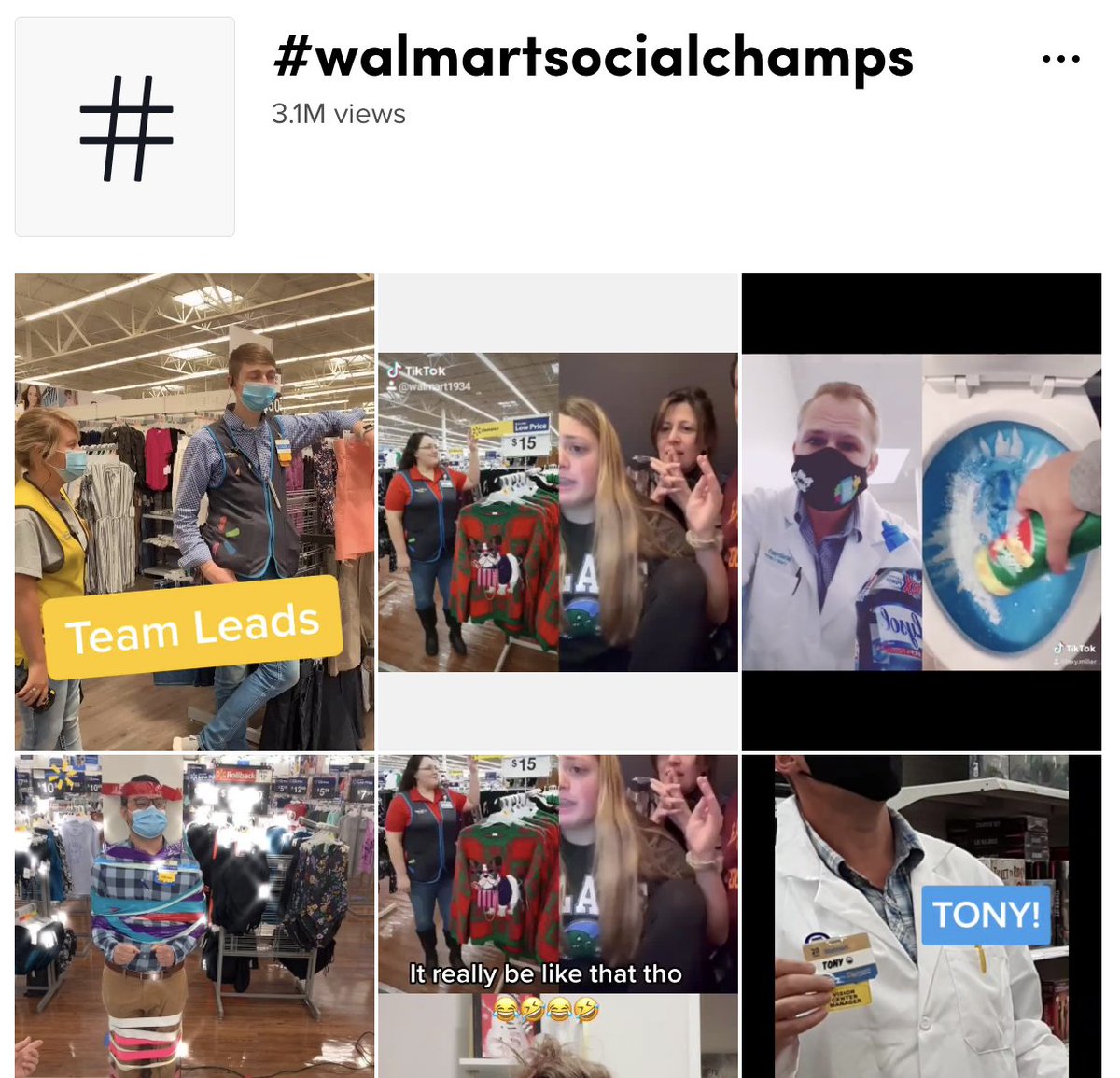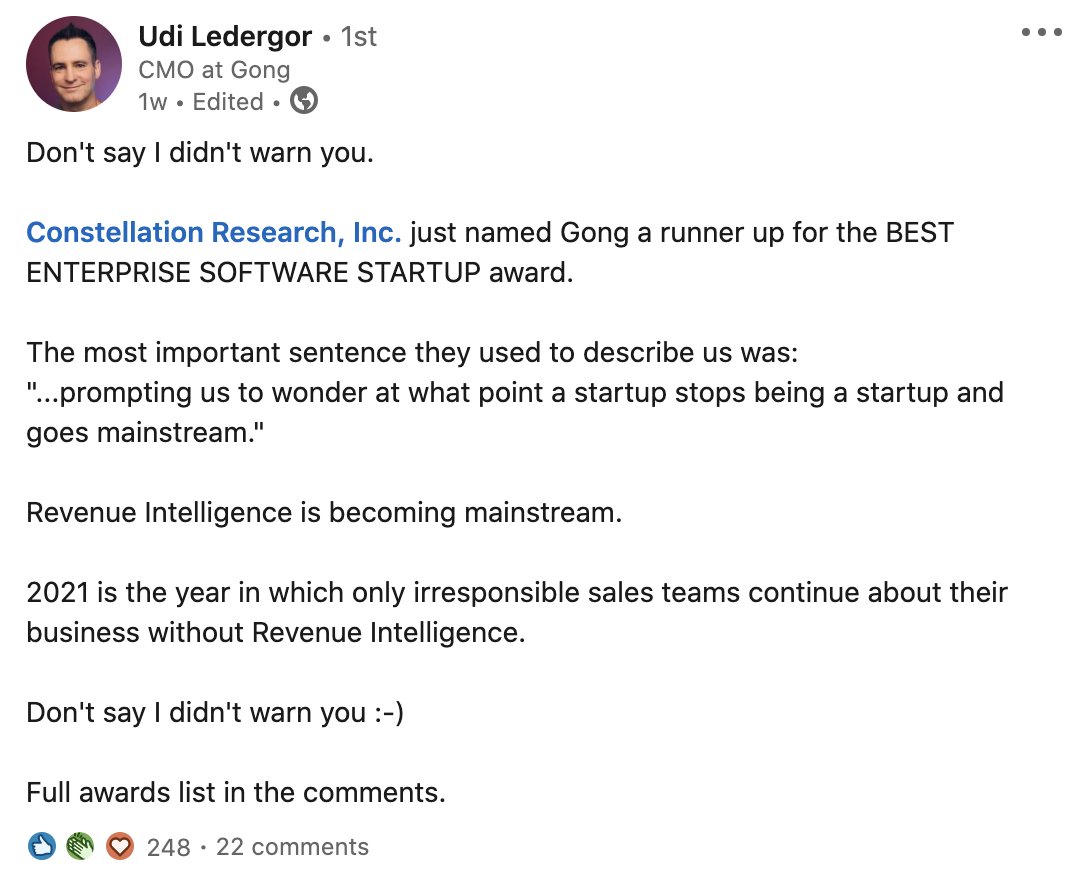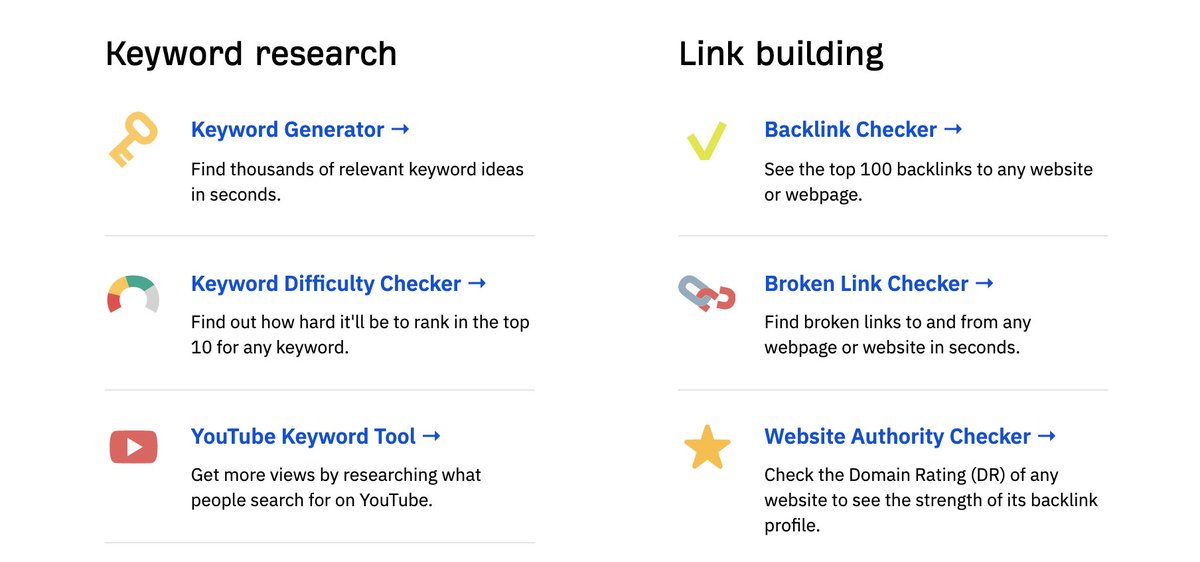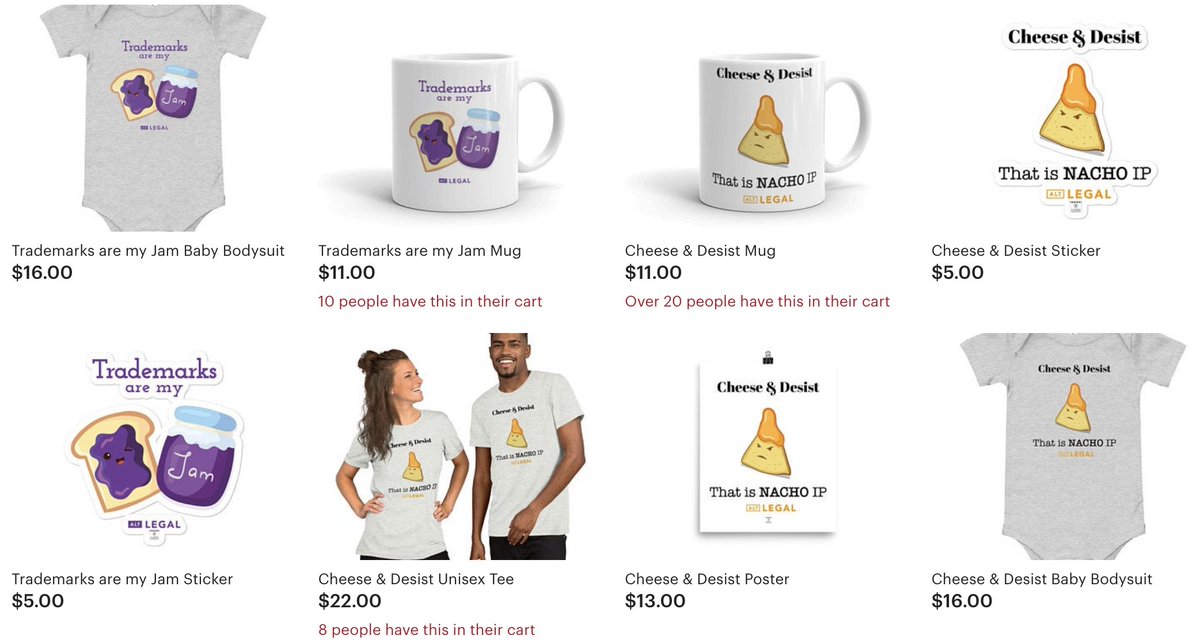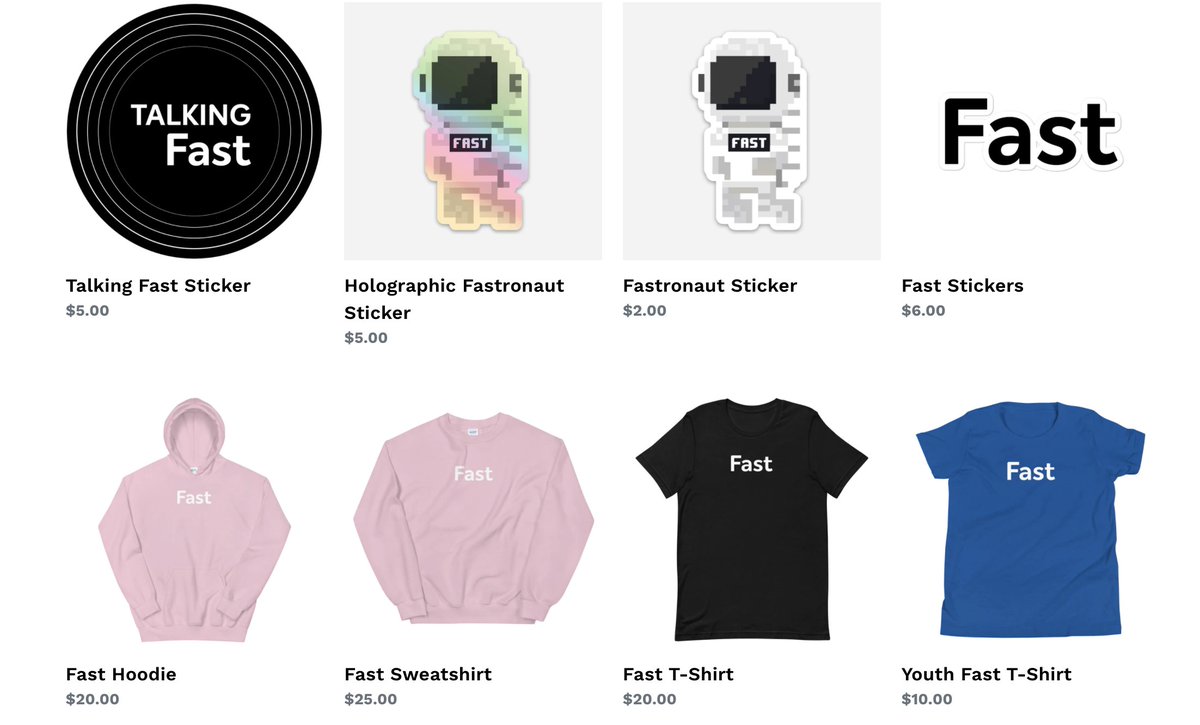Let’s kick the year off with some inspiration.
Here are 7 creative marketing tactics to test for your 2021 strategy, with examples shared by some of the top brands and thinkers!
A thread

Here are 7 creative marketing tactics to test for your 2021 strategy, with examples shared by some of the top brands and thinkers!
A thread

1. Creating gifs or GEO (gif engine optimization)
@MarketingBrew dove into how @eToroUS uploads branded gifs to online gif search database, @GIPHY https://twitter.com/MarketingBrew/status/1338552003132334084
@MarketingBrew dove into how @eToroUS uploads branded gifs to online gif search database, @GIPHY https://twitter.com/MarketingBrew/status/1338552003132334084
Those gifs were then available for use across a number of platforms that integrate with the tool (inc Twitter) https://twitter.com/BradMichelson/status/1334870657503522817
@BradMichelson, @eToroUS marketer:
“So we’re pretty focused on the bitcoin / crypto industry, which primarily spends its time on Twitter. A lot of conversation involves GIFs in one way or another. We also run ads on Twitter and remarket elsewhere.”
“So we’re pretty focused on the bitcoin / crypto industry, which primarily spends its time on Twitter. A lot of conversation involves GIFs in one way or another. We also run ads on Twitter and remarket elsewhere.”
He also added:
“I do think it’s easiest going niche first, similar to SEO, because it’s hard to break into the highest volume terms. But you also need to know the kinds of phrases your audience is most likely to look for on @giphy.” https://twitter.com/BradMichelson/status/1338577334123814914
“I do think it’s easiest going niche first, similar to SEO, because it’s hard to break into the highest volume terms. But you also need to know the kinds of phrases your audience is most likely to look for on @giphy.” https://twitter.com/BradMichelson/status/1338577334123814914
Other brands that use GEO / gif marketing include @AlaskaAir and @Hootsuite. https://twitter.com/AtNickMartin/status/1338596040023318528
In total @GIPHY partners with over 200 brands and also a number of artists that have their own branded channels and customized content, including Disney, GE and Pepsi.
2. Unsplash stock photos
@Unsplash is one of the leading stock photo websites in the world. It boasts over 2M images in its content library and generates over 17B impressions on those images each month.
@Unsplash is one of the leading stock photo websites in the world. It boasts over 2M images in its content library and generates over 17B impressions on those images each month.
There are three routes that work to support a marketing strategy.
The first is opting for the paid advertising available through the platform via Unsplash for Brands.
The first is opting for the paid advertising available through the platform via Unsplash for Brands.
The other utilizes the massive organic reach afforded to those who upload photos.
@GoodMarketingHQ shared the story of @MaxNPalmer & Tower Paddle Boards, whose stock photo uploads of products resulted in 6M views and 24k downloads in only 5 months https://twitter.com/GoodMarketingHQ/status/1290266755693068288
@GoodMarketingHQ shared the story of @MaxNPalmer & Tower Paddle Boards, whose stock photo uploads of products resulted in 6M views and 24k downloads in only 5 months https://twitter.com/GoodMarketingHQ/status/1290266755693068288
Other examples:
Furniture company @inside_weather uploaded a curated collection of images featuring the brand’s own products.
And @MorningBrew also featured a number of images in the Unsplash library that subtly promote the brand.
Furniture company @inside_weather uploaded a curated collection of images featuring the brand’s own products.
And @MorningBrew also featured a number of images in the Unsplash library that subtly promote the brand.
And lastly, user-generated content provides value on this channel as much as anywhere else.
Encouraging customers to share photos if they have access could also benefit your brand.
@Shopify and Supreme are two examples of this.
Encouraging customers to share photos if they have access could also benefit your brand.
@Shopify and Supreme are two examples of this.
3. Meme marketing and ads
Meme marketing makes sense in today’s Internet culture. They feel like they’ve become a natural form of digital expression, like emojis or online slang (lol, brb).
Meme marketing makes sense in today’s Internet culture. They feel like they’ve become a natural form of digital expression, like emojis or online slang (lol, brb).
And people love them. Meme accounts like @daquandottv and @ladbible are some of the most widely followed across a number of social platforms. They’re built for virality.
It helps drive a higher ROI if your ad makes people want to reshare or discuss it. https://twitter.com/iamdansnow/status/1338949757444698112
It helps drive a higher ROI if your ad makes people want to reshare or discuss it. https://twitter.com/iamdansnow/status/1338949757444698112
Another bonus: even meme marketing content that is bad can drive high engagement.
In fact, meme ads that are really bad probably get just as much attention, if not more, than those that are really good. https://twitter.com/Rbyn_Rox/status/1341938155147173888
In fact, meme ads that are really bad probably get just as much attention, if not more, than those that are really good. https://twitter.com/Rbyn_Rox/status/1341938155147173888
@Current, a fintech company offering 100% mobile banking, does well at incorporating memes into their ad strategy, which seems to primarily target Gen-Z and Millennials.
They combine creative memes with user-generated versions as well, which adds a feeling of authenticity.
They combine creative memes with user-generated versions as well, which adds a feeling of authenticity.
4. Employee-generated content
Employee advocacy has become a huge talking point.
Especially with the rise of high-profile instances of Gen-Z workers sharing viral social media content about their job life and the varied responses from employers https://twitter.com/ianrborthwick/status/1330966419203350529
Employee advocacy has become a huge talking point.
Especially with the rise of high-profile instances of Gen-Z workers sharing viral social media content about their job life and the varied responses from employers https://twitter.com/ianrborthwick/status/1330966419203350529
With this becoming more of a rising trend, a number of brands now prioritize creating a proactive policy to not only manage but also encourage employees to post about their experiences.
B2B companies like @Drift and @Gong_io are prime examples of this on @LinkedIn.
Their entire teams actively share content about company culture and more. It draws more attention than the brand’s official content alone, increasing brand awareness for free.
Their entire teams actively share content about company culture and more. It draws more attention than the brand’s official content alone, increasing brand awareness for free.
5. Faux campaigns
You don’t have to save the laughs for April Fools Day.
Amazon kicked off 2020 with a very interesting product launch -- Amazon Dating. https://twitter.com/aniacopian/status/1224760570374524929
You don’t have to save the laughs for April Fools Day.
Amazon kicked off 2020 with a very interesting product launch -- Amazon Dating. https://twitter.com/aniacopian/status/1224760570374524929
And then there’s @kfc.
The brand is known for playful campaigns and a tongue-in-cheek tone. They aren’t afraid to poke fun and make light.
Their announcement of a new KFConsole (that lets you game + warm your fried chicken) follows that same pattern. https://twitter.com/kfcgaming/status/1341428570388901891
The brand is known for playful campaigns and a tongue-in-cheek tone. They aren’t afraid to poke fun and make light.
Their announcement of a new KFConsole (that lets you game + warm your fried chicken) follows that same pattern. https://twitter.com/kfcgaming/status/1341428570388901891
6. Freemium tools
@Hubspot launched the Website Grader in 2006. And by 2011 over 4M websites had been run through the free online tool to analyze various elements, including performance and speed.
@Hubspot launched the Website Grader in 2006. And by 2011 over 4M websites had been run through the free online tool to analyze various elements, including performance and speed.
The website requires an email to get access to results, which makes it a powerful lead generation tool.
Users looking for evaluations of their website often correlate with HubSpot’s ideal customer persona (ICP). And that means fewer garbage leads.
Users looking for evaluations of their website often correlate with HubSpot’s ideal customer persona (ICP). And that means fewer garbage leads.
A key thing to note: The Website Grader is a really high-quality tool. It provides true value to users rather than giving users a taste and then forcing them to pay for a full product.
Free offers should have real value, which builds trust in your brand. https://twitter.com/TheCoolestCool/status/1310670457134362625?s=20
Free offers should have real value, which builds trust in your brand. https://twitter.com/TheCoolestCool/status/1310670457134362625?s=20
Another company that does exceptionally well with offering free tools to generate awareness, backlinks and leads is @ahrefs.
They have a free backlink checker, free webmaster tools, and much more.
They have a free backlink checker, free webmaster tools, and much more.
7. Branded merchandise
A number of brands have been making waves with this one.
Like organic baby food company @yumi, which offers a children’s e-book called “Rainbows in Windows.” https://twitter.com/SnoopDogg/status/1251249312383635456
A number of brands have been making waves with this one.
Like organic baby food company @yumi, which offers a children’s e-book called “Rainbows in Windows.” https://twitter.com/SnoopDogg/status/1251249312383635456
@AltLegalHQ, a startup that offers digital tools for trademark & IP lawyers, sells items via @Etsy positioned as great gifts to give their target audience. T-shirts, mugs, art pieces and more round out their collection. https://twitter.com/AltLegalHQ/status/1341066208976785418
To note, @AltLegalHQ merch proceeds go to @PlayingFldProj, an organization that gives free test prep for the Law School Admissions Test (LSAT) to low-income individuals from underrepresented (BIPOC) communities.
And I couldn’t forget to include ecommerce payments startup @fast. The company’s hoodies and other items, like stickers and baseball caps, have become a status symbol among the brand’s fans. https://twitter.com/supervieira/status/1344331872336302088
Co-founder and CEO @domm said 10k hoodies have been sold so far. The success surprised the team, given that the merchandise store was originally set up as a way to test the 1-click checkout technology. https://twitter.com/domm/status/1341531357856460801
On the @fast podcast, Talking Fast, Domm and co-founder @abarrallen said this tactic falls within their natural tendency to build in public.
It’s enabled people to connect with the brand, its story, and create a cult following within only a short amount of time.
It’s enabled people to connect with the brand, its story, and create a cult following within only a short amount of time.
@abarrallen: “Because people are following, they’re cheering for you.
And this becomes like sports teams that people want to succeed because they’ve followed along and seen the ups and downs and bugs and things that work and don’t."
#BuildInPublic
And this becomes like sports teams that people want to succeed because they’ve followed along and seen the ups and downs and bugs and things that work and don’t."
#BuildInPublic
If you enjoyed this thread, please subscribe to my newsletter! I include content like this plus more delivered directly to you. https://chantellemarcelle.com/marketing-newsletter/

 Read on Twitter
Read on Twitter